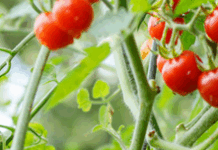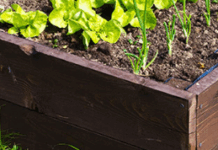https://hnr.k-state.edu/extension/info-center/newsletters/index.html
Blog Post: http://www.ksuhortnewsletter.org
Video of the Week: Low Light Indoors, No Problem
https://kansashealthyyards.org/all-videos/video/low-light-indoors-no-problem
Final Newsletter of the Season
This will be the last issue of Horticulture 2022. The first issue of Horticulture 2023 will be sent on January 10.
We would love to have feedback on the newsletter and would appreciate it if you could spend a couple of minutes filling out a very short survey at: https://kstate.qualtrics.com/jfe/form/SV_8lbVuBhL6psVrEi
Your current subscription for the newsletter will continue as is, so nothing will be necessary on your part to continue receiving it. If there are suggestions for improvement or subjects you would like to see covered, include those suggestions in the survey linked above. Please tell anyone you know who might be interested in subscribing that they are encouraged and welcome to do so by sending an e-mail to Ward Upham at wupham@ksu.edu requesting a subscription.
On behalf of all of us at K-State we wish you a Merry Christmas and Happy New Year. (Ward Upham)
ORNAMENTALS
What to Do With the Christmas Tree After Christmas
After the holidays, many municipalities allow old Christmas trees to be placed curbside. Trees are then collected and ground up for mulch or burned. If you miss the designated date, or your trash collector doesn’t accept trees, there are several options to prolong the useful life of the tree.
An old Christmas tree can be used to benefit birds, fish, and the landscape by placing it in a corner of your deck, and spreading some birdseed nearby, or tying it to a deciduous tree or post near a bird feeder. The birds benefit from having escape cover nearby when hawks or cats threaten, and the dense boughs reduce the wind chill on a cold night.
Sinking your Christmas tree in a pond is an easy way to improve fish habitat and fishing. The tree serves as a coral reef, in that the branches provide substrate for water plants to grow, and cover for minnows and other forms of small aquatic life. Larger fish are drawn by the shade and the presence of prey.
How do you sink a tree? Tie the base to a cinder block with a short, stout rope, and toss it in. Just be sure to get permission from the pond owner first! Using the little tree around the landscape requires clipping off all of the branches. Use the boughs to add extra insulation around semi-hardy perennials or to trees and shrubs that were recently planted. The leftover trunk may be used as a garden stake next spring.
You may also cut and let the tree dry for a few weeks providing some easy lighting firewood. Just beware that most conifer species tend to spark and pop more than hardwoods, as resin pockets in the wood make tiny explosions. This can delight the youngsters, but for safety’s sake, keep an eye on the fire when burning Christmas tree logs! (Charlie Barden)
FRUIT
Care of Gift Fruit Baskets
A holiday tradition is to give gifts of fruits and nuts (along with other products). Usually these are placed in an attractive basket, wrapped with cellophane covering, and brought (or shipped) to your house. It is important that the fruit contained inside is kept in cool conditions to maintain its quality for as long as possible. Thus, it is wise to disassemble the fruit basket as soon as you receive it and place the fruit in refrigerated storage. If all the products in the basket are tree fruits (such as apples, pears, oranges or grapefruit), you can place the entire basket in a cool place- around 40 degrees F for best results. If the basket contains any bananas or other tropical fruits (with the exception of citrus), remove those fruits and store them separately. About 3-4 weeks is about as long as you can expect to store these fruits without some shriveling and loss of crispness. (Ward Upham)
MISCELLANEOUS
Storing Pecans and Other Nuts
During the holiday season, pecans and other nuts are commonly given as gifts or purchased for holiday cooking. Nuts can quickly lose quality if not stored properly. Excessive water loss can lead to shriveled nutmeats, and the fats and oils in nuts can quickly spoil – developing an off-flavor or rancid taste. Store shelled (or unshelled nuts) in the refrigerator, or preferably the freezer. Nuts quickly absorb flavors from other stored products, so store them in a tightly sealed container so they won’t lose water or absorb flavors from other fruits or vegetables. A solid plastic container with a tightly fitting lid is preferred. You can use a heavy grade resealable plastic bag as well. If nutmeats are tightly sealed, they can be stored in a freezer for up to one year, but using them within six months is preferred. (Ward Upham)
Contributors: Charlie Barden, Extension Forester; Ward Upham, Extension Associate
Department of Horticulture and Natural Resources
1712 Claflin, 2021 Throckmorton
Manhattan, KS 66506
(785) 532-6173
For questions or further information, contact: wupham@ksu.edu OR cdipman@ksu.edu
This newsletter is also available on the World Wide Web at:
http://hnr.k-state.edu/extension/info-center/newsletters/index.html
The web version includes color images that illustrate subjects discussed. To subscribe to this newsletter electronically, send an e-mail message to cdipman@ksu.edu or wupham@ksu.edu listing your e-mail address in the message.
Brand names appearing in this newsletter are for product identification purposes only. No endorsement is intended, nor is criticism implied of similar products not mentioned.
K-State Research and Extension is committed to making its services, activities and programs accessible to all participants. If you have special requirements due to a physical, vision or hearing disability, or a dietary restriction please contact Extension Horticulture at (785) 532-6173.
Kansas State University Agricultural Experiment Station and Cooperative Extension Service K-State Research and Extension is an equal opportunity employer. Issued in furtherance of Cooperative Extension Work, Acts of May 8 and June 30, 1914, as amended. Kansas State University, County Extension Councils, and United States Department of Agriculture Cooperating, Ernie Minton, Dean.





